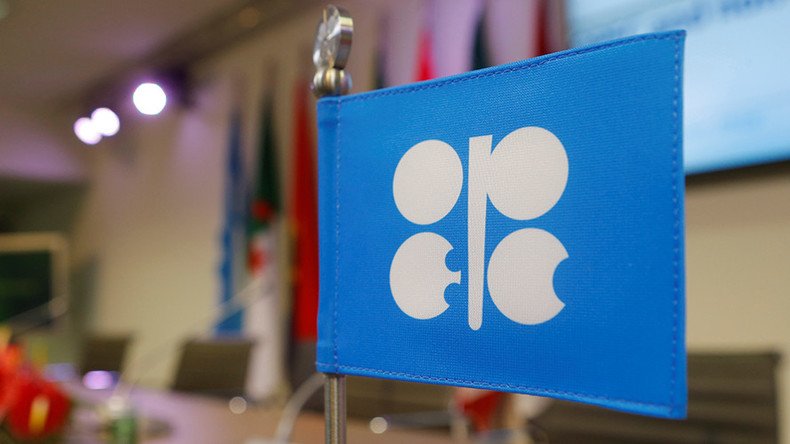‘Historic’ deal to cut oil production shows ‘OPEC is on its last legs’

A recent deal to cut oil production agreed on by non-OPEC countries shows that OPEC does not play the same role it used to, and the views of Russia and other countries have to be taken into account, according to Ben Aris, editor and publisher of BNE.
A landmark deal was reached in Vienna on Saturday between OPEC and non-OPEC nations to drastically cut global oil production, the first such agreement in 15 years. It should help stabilize prices, which have slumped in recent years and wreaked havoc on oil-reliant economies worldwide
The group of non-OPEC oil countries will cut production by almost 560,000 barrels per day. Russia, as expected, will shoulder more than half of the burden, while Mexico will make the second-largest cut – 100,000 barrels. Oman's reduction is reported to be the third largest. Last week, OPEC agreed to reduce output by 1.2 million barrels per day starting in January.
BREAKING: Non-OPEC countries agree to #cut#oil production by 558,000 barrels per day https://t.co/edoTgAZi0r#OPECpic.twitter.com/SeEO8bjpQw
— RT (@RT_com) December 10, 2016
Ben Aris, editor and publisher of BNE, thinks the deal can be hailed as “historic.”
“For the last couple of years, the Saudis in particular and OPEC in general have been trying to drive down the oil price in order to make US shale production marginal. That strategy has now failed. Consequently, everybody is giving up and going back to some sort of cooperation in order to drive the oil price up again for the benefit of the oil producers,” he told RT.
“This is also a historic, in a way, because it means that OPEC as a cartel is now on its last legs. It used to be able to control the oil prices and now it can’t. This deal is a confession to the fact that OPEC’s power is now, not entirely broken, but certainly doesn’t play the same role that it used to. And all these other producers, and the ones that have come back in the market like Libya, Iraq, now the US as well, and Russia, who is a non-OPEC member – their views have to be taken into account, so the group is much broader.”
Commenting on how the joint cut may affect the markets, Aris is certain that it will support oil prices. However, he added, it’s important that a “delicate balance” is struck.
“The supply is still running slightly ahead of demand, which has been keeping the prices low. The balance here is that all of the oil producers want to see oil prices go up, but they can’t see them go up by too much, because if they do, then all of the marginally profitable shale producers in the States start to make money again. And then they will come back online and start pumping. That provides a de facto cap. This means that the days of $100-150 oil are over, because the States will just ramp up oil production and increase the supply... The demand is just certainly not there for a lot more oil. So they've got to find this sort of balance point by cutting production enough to drive prices up a bit. And we’re talking about $55-60. And then any price rise beyond that – the prices would be pushed down by new oil production coming online from places like the US,” Aris said.
‘If Russia & Saudi Arabia lead, rest will follow’: Saudi energy minister on historic oil dealhttps://t.co/GCm020w5Qq
— RT (@RT_com) December 11, 2016
The significance of US shale oil production should not be exaggerated, argues Mamdouh G. Salameh, an international oil economist.
“We’ve always said that when the price goes up, US shale oil producers will come back. But we should not exaggerate the threat of US shale oil producers. Remember, despite the rise on production up to 2014, shale oil producers were not behind the big glut in the market; it was OPEC members flooding the market with oil for political reasons. Still, the shale oil production will start to increase, but I am sure that because the fundamentals of the global oil markets are positive, when you add to them the cuts, the price will start to go up and the market could absorb a bit of the increase from the US shale production,” he told RT.
The economist is not surprised at all that the group of nations has finally agreed to cut production.
“Both sides have vested interest in reaching the agreement and abiding by the cuts for the sake of supporting the price. Both sides – members of OPEC and producers from outside OPEC – have suffered a lot with the steep decline of oil prices since 2014. They have now vested interest to insure that the agreements are abided by, and that the price goes up relatively. It will not reach the level that was in 2014, but it will certainly start to move upward,” he explained.
In Salameh’s opinion, following the agreement, the price of oil could reach $60 before the end of 2016 or the start of 2017, and rise to $70 in the second half of next year.
“After that, only the balance between supply and demand will determine how mch higher the price could go,” he added.
The statements, views and opinions expressed in this column are solely those of the author and do not necessarily represent those of RT.











